For this week’s lesson, we’ll study one of John Mayer’s beautiful guitar solos from the 7-16-2016 version of Sugaree with Dead and Company, at Fenway Park in Boston, MA. I’ll break down this solo into four digestible licks and we’ll talk about how you can use Mayer’s soulful techniques in your own playing.
[Title image Credit: Robert Altman Via Star Tribune]
I’ll admit that I’m not the biggest John Mayer fan.
Don’t get me wrong – I’ve always respected him and his undeniable talent on the guitar.
But I’ve never kicked my shoes off after a long day of work and said to myself “I think I’ll listen to an entire John Mayer record today.”
When I heard that John was joining Dead and Company, I was about as excited as a chef who learned that one of Guy Fieri’s restaurants had earned four Michelin stars.
Boy, was I wrong.
Mayer absolutely knocked it out of the park with Dead & Co. in 2016.
He managed to win over even the most jaded Deadheads with his pitch-perfect crooning and Jerry-flavored guitar work.
Before a few days ago, I had never learned a single John Mayer song, solo, or even a lick of his.
But one day last week, I was hanging out with a friend who had put the 7-16-16 stream rip of Sugaree up on his big screen.
Once I heard that first solo in Sugaree, I knew I absolutely had to learn it. It was perfect, soulful, and beautiful as all hell.

In this version, he manages to pay homage to Garcia while making a statement that is all his own.
Bobby and the gang could have picked any world-class player for the lead guitar chair in Dead & Co., and in hindsight, I don’t think they could have made a better choice than John Mayer.
The cynic in me originally though that they chose Mayer because they wanted to put asses in seats.
But truthfully, I think they could have chosen someone who wasn’t a household name and still packed stadiums around the country.
However, Mayer has provided his infectious brand of energy and breathed a new, brilliant light on the Dead’s timeless catalog.
I can promise you that this will not be the last Mayer solo that is covered on amarguitar.com.
After this lesson, you’ll learn what makes John Mayer’s solo on the 7-16-16 Sugaree so melodic and heartfelt, and how you can incorporate these bluesy elements in your playing.
Let’s dive in.
Gear Used for This Video
Performance:
- Custom 50th Anniversary Tiger Guitar by Lieber Guitars
- Two Rock Studio Pro Plus 35W Combo Amplifier w/
- Pickboy Pos-a-Grip Jazz Classic Tortoise Shell Cellulose 1.50mm Picks
- Planet Waves Custom Series Right Angle Guitar Cable
Recording:
- AKG D8000M Dynamic Vocal Microphone (vocal mic)
John Mayer’s 7-16-2016 Sugaree Solo Analyzed Note-for-Note
Lick 1

So for the first part of this lick, Mayer is playing right out of the B major pentatonic scale:

He then plays some notes out of the E major scale in the C shape:

Now what’s important about this, is that Mayer is not playing random notes out of the E major scale.
As soon as the chord changes to E, he very purposefully targets the 3rd of E major (G# sharp note, 6th fret D string).
Let’s look at the chord tones of E in this part of the neck:

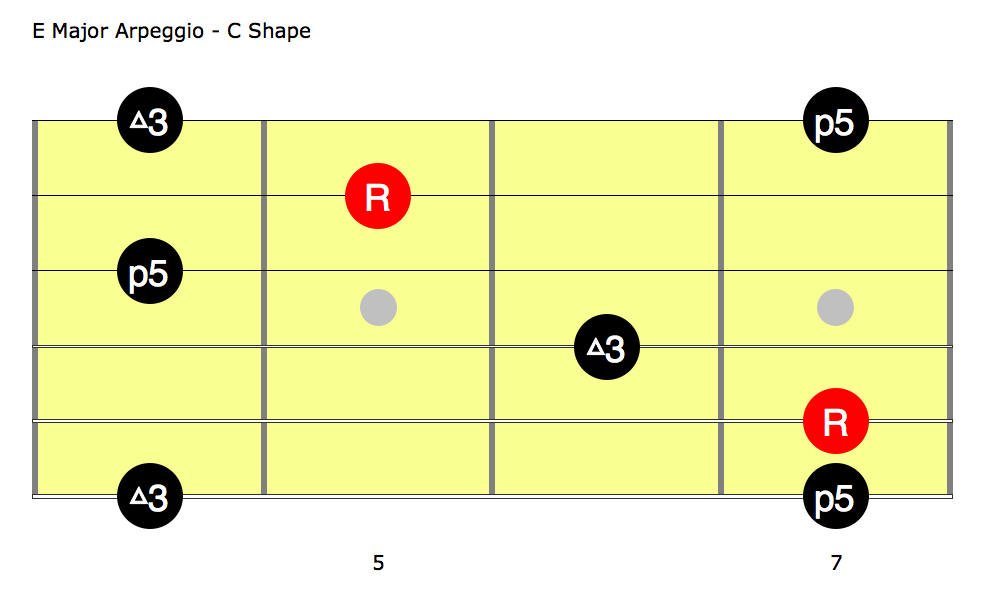
He also lands on the 9th of E (F# note, 4th fret D string) and stays there for a beat.
Now this is important, because this note has a bit of tension, and it wants to be resolved.
He resolves it by playing three more notes out of the E major scale, and then when the chord changes to B, he lands on the 3rd of B (D# note, 6th fret A string).
Let’s look at the chord tones of the B major Arpeggio in the G shape.


One of my buddies went to see Mayer’s band play last week at the old Knickerbocker arena in Albany, and as a new fan he had a really great comment that I’d like to share with you. He said:
“I never realized how sick his solos are. So simple, it’s like he’s singing.”
I’m mentioning this because lick # 1, and pretty much the whole solo has that vocal quality. It’s very emotional and expressive.
And there’s one big secret about this approach that most guitar students either don’t know, or don’t use.
This brings us to our first takeaway.
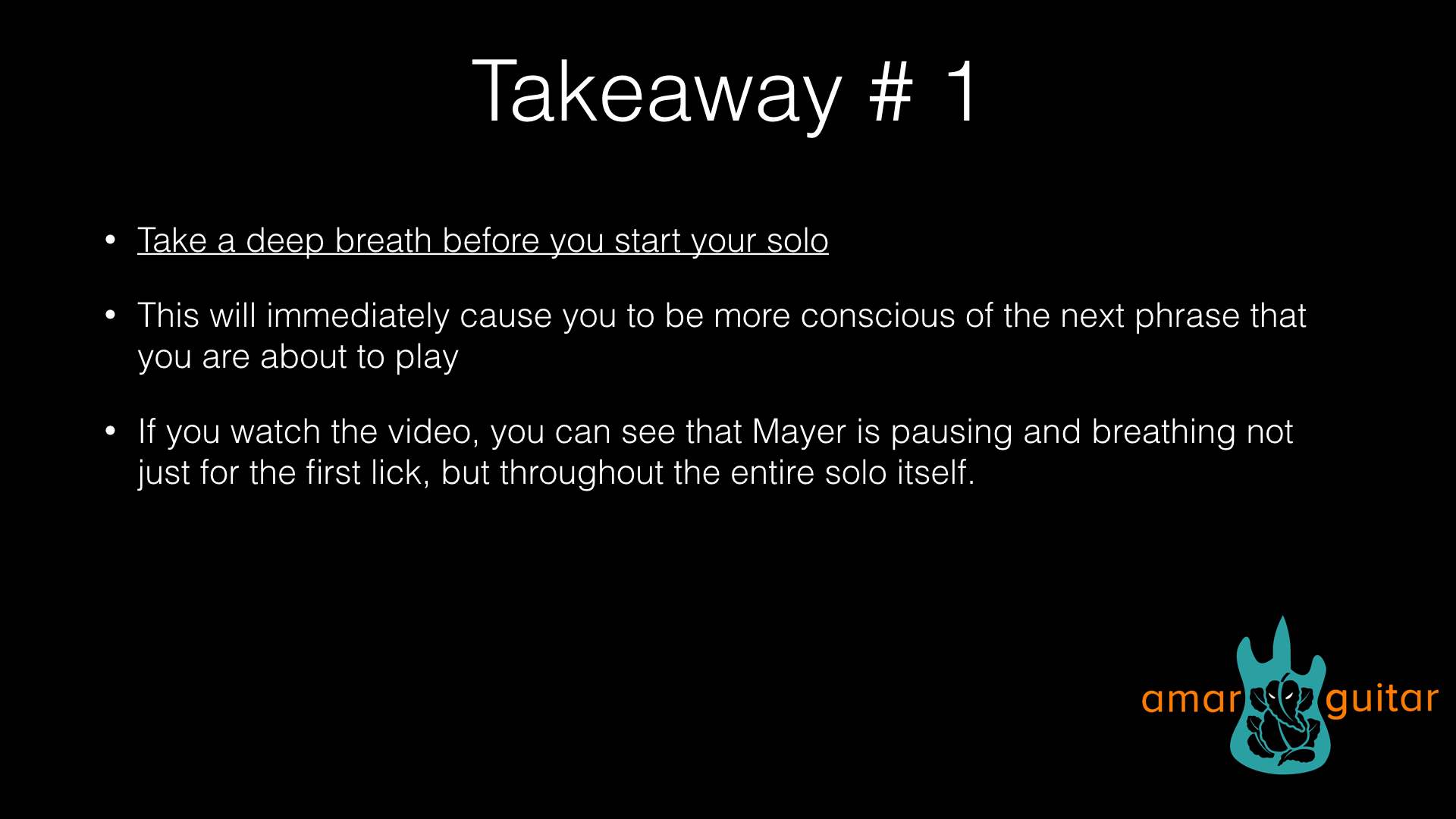
If you watch the performance video, you can see that Mayer is pausing and breathing not just for the first lick, but throughout the entire solo itself.
Of course, this is not a technique that is exclusive to Mayer. A lot, if not all, of the great players do this.
And as guitar players, we often tend to think from our fingers. But we can see that Mayer is not just running scales or arpeggios. He is feeling and hearing the notes before he plays them, and taking those deep breaths definitely helps with that.
So if you start consciously breathing between your phrases, you’ll notice that you will immediately sound more purposeful and focused, just like John Mayer’s lines do here.
Lick 2

For the first part of this lick, Mayer outlines the G shape of the B chord.

The 6-4-6 on the G string are also right out of the B major pentatonic scale, which we spoke about in lick # 1.
When the chord changes to E, he plays the root (E note, 5th fret B string), slides up to the 9th (F# note, 7th fret B string) and slides back down to the root of the E chord.
After that, he does a cool descending lick that uses notes right out of the E major scale. In addition to fingering the notes, he also does a reverse rake with his pick hand.
He then plays some more notes that are right out of the E major scale.
Mayer then resolves to the third of B (D# note, 4th fret B string) as soon as the chord changes to B.
This us to our second takeaway:
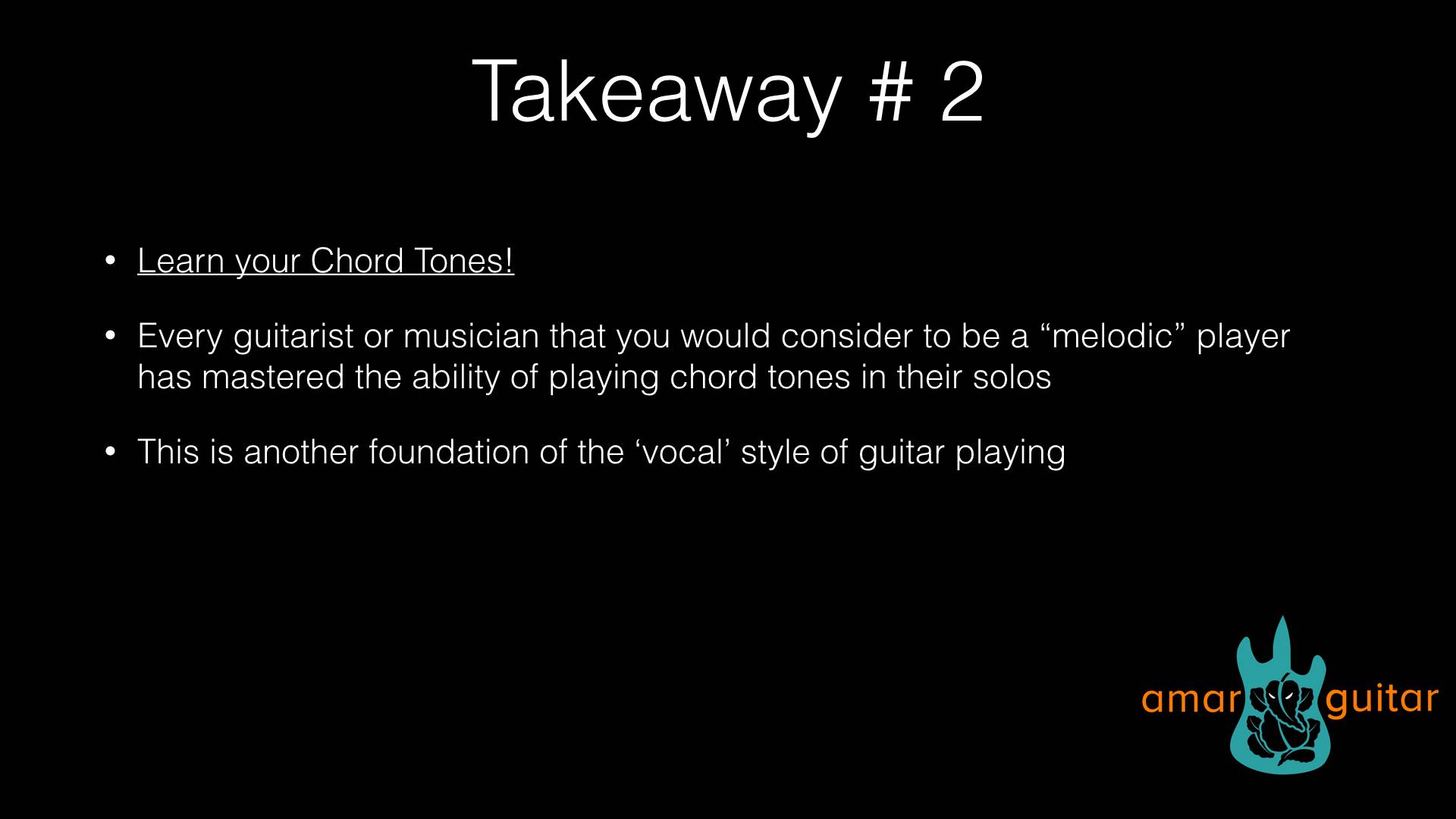
As stated in the video, it is crucial that you have the chord tones of B and E memorized if you want to play a meaningful solo over Sugaree, or over any song that uses these two chords.
Here are fretboard maps of all of these chord tones:
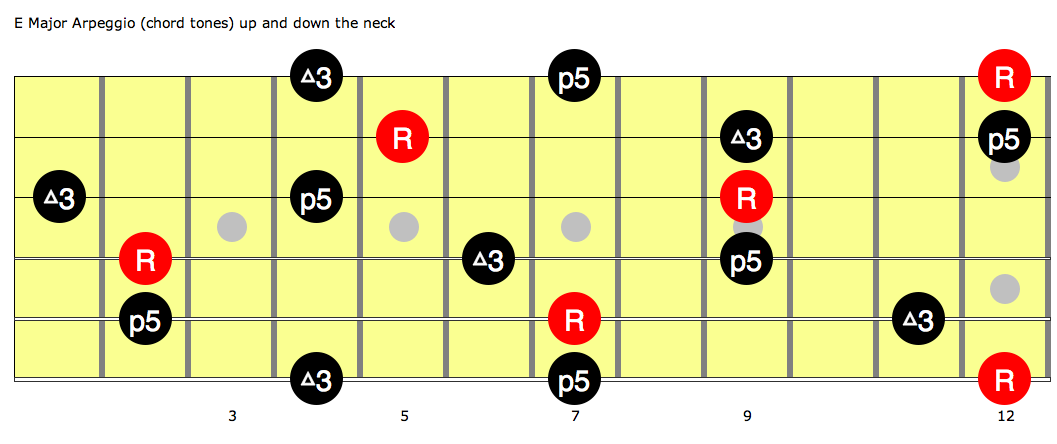
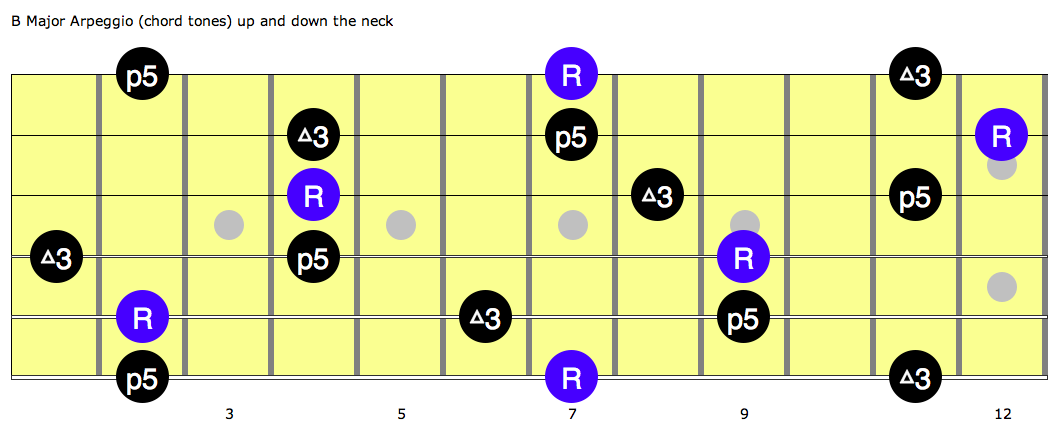
Lick 3

In this lick, Mayer repeats the last part of Lick 2, and he uses an octave approach to emphasize the 5th of B (F# note, 4th fret D string and 7th fret B string)
He then pulls off and lands on the root of B for a moment (4th fret G string).
After that, he nails the 3rd of E by sliding up to it (G# note, 6th fret D string).
Now we’ve got a lick that takes all of its notes right out of the E major pentatonic scale.

Now I’m about 90% sure that this is a Jerry lick that Mayer lifted. I swear that I’ve heard Garcia use this lick, particularly in one of the Europe ’72 recordings. Unfortunately, I don’t have the time this week to dig through all 70 CDs in the Europe box set to prove that claim, so you’ll just have to take my word for it. Or not, whatever bro.
Lick 4

For this lick, we have some more notes right out of the E major scale.
Notice that John targets the 3rd of E (6th fret D string) followed by the 3rd of B (6th fret A string).
The third is often the “sweetest” chord tone, which is why this lick sounds so melodic.
There’s also another technique that he uses over the B chord. He plays the 4h6 4h6 on the A string (nailing the 3rd of B) a little behind the beat.
It would still sound good if he played these notes directly on the beat, but laying back just a little bit in the time, add to the soulfulness.
This brings us to our third takeaway:

For the final part of the lick, he goes right up the G shape of the B chord starting on the 3rd (6th fret A string) and ending on the 3rd, but up a position (8th fret, G string).
He then plays some notes out of the A shape of E, but he plays these notes right over the B chord, which is why it sounds interesting and different from the other licks in the solo.
There’s also a little classic Jerryism going on with the 9p8p7 on the B string. He loved those triplet pull off licks, and they definitely became a hallmark of his playing.
Here are the chord tones of E, in the A shape:

Finally, to end the solo, he plays a I-IV superimposition.
Now that may sound complicated, but it’s not – all it means that that you’re playing a rootless IV chord over the 1 chord.
So Mayer plays a I-IV superimposition by playing the E major arpeggio in the G shape and then playing a rootless A chord in the C shape.
Again, complicated name but a very simple and recognizable sound
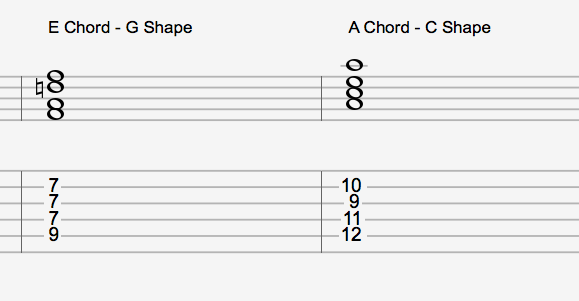
Putting It All Together
So now we’ve talked about every note and concept that Mayer plays in this killer solo.
How do we put it all together?
Youtube has a great feature that allows you to slow down the speed of videos without changing the pitch.
At the time of filming this lesson, this speed feature is currently available on the desktop browser version Youtube only. If you’re watching this on mobile device such as a smartphone or a tablet, you’ll need to switch to an actual desktop or laptop for this one.
- So your homework is to scroll to the beginning of this video and then click the gear symbol and then 50% speed button and play along to the solo.
- Once you can play the whole solo at half speed without any mistakes, you should move on to 75% speed and play along to it again.
- Once you can play it at 75% speed, try it at full speed.
Some of you may find this solo challenging, but I promise that you can learn how to play it if you follow these steps!

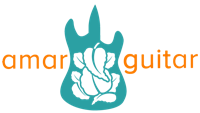
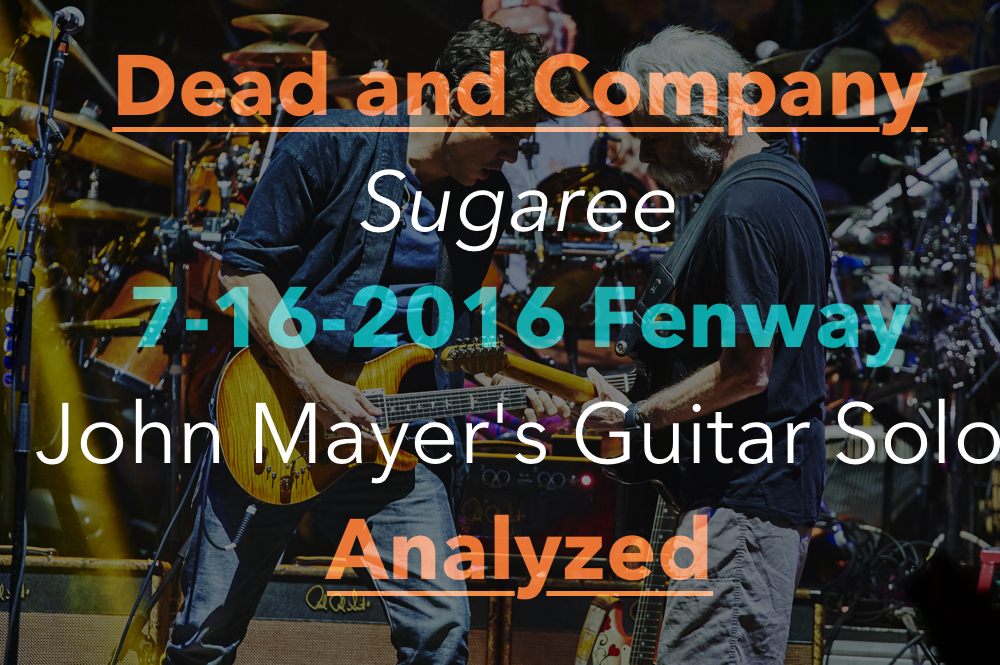






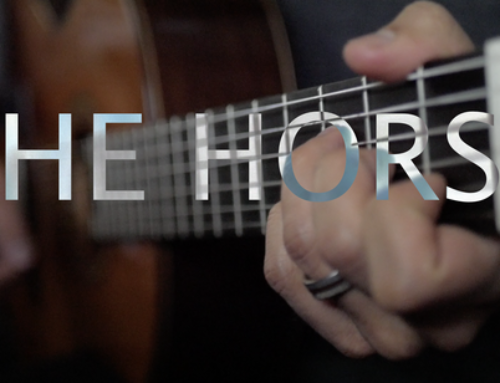

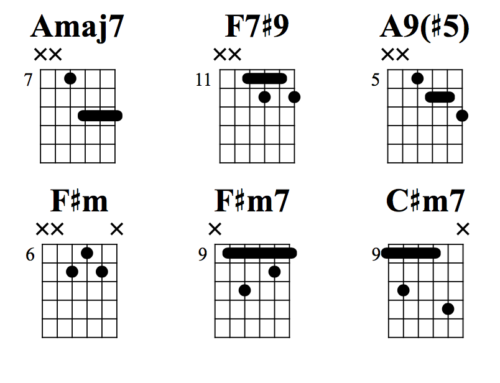

Leave A Comment